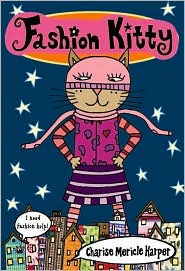Lesson Plans Alice Boone
Day 1-5: October 25- October 29th
| Day #1 = October 25 (Monday) |
| Reading/Grammar/ Spelling instruction 8:15-8:55 (40 minutes) Objectives: Identifying and understanding capital and proper nouns Materials: New working with words list Procedure: Introduce new words for the week. Go over the rules for plural nouns. Practice. Spelling plural nouns on dry-erase boards. Give out baseball teams to each student so they can begin to research the teams to use in a paper topic. |
| Preview Station for 5 day lesson 8:55-9:05 or 1:25-1:35 (10 minutes) |
| Station 9:05-9:45 (40 minutes) |
| |
| |
| |
2:45-2:55 Clean up and pack up
2:55-3:00 Listen to Announcements
3:00 Dismissal
| Day #2 = October 26 (Tuesday) |
| Reading/Grammar/ Spelling instruction 8:15-8:30 (15 minutes) Objectives: Use correct capitals and plural nouns Materials: DOL #15 Procedure: Students will do DOL in composition notebook. They will correct the sentence. They will raise their hand when finished to be checked. Afterwards, we will review the concepts plural nouns. |
| Writing Workshop 8:30-9:10 (40 minutes) Objective: The student will be able to select, create and use graphic organizers to interpret textual information. We will be choosing from baseball looking graphic organizers to go on with our novel Skinnybones Materials: graphic organizer Procedure: I will introduce graphic organizers. Students will then work on graphic organizer. |
| Station 9:10-9:45 or 1:40-2:15(35 minutes) |
| |
Lesson Plans
Day 1-5: October 25-29, 2010
| Day #3 = October 27 (Wednesday) |
| Reading/Grammar/ Spelling instruction 8:15-8:30 (15 minutes) Objectives: Use correct capitals and plural nouns Materials: DOL #15 Procedure: Students will do DOL in composition notebook. They will correct the sentence. They will raise their hand when finished to be checked. Afterwards, we will review the concepts plural nouns |
| Guided Reading 8:30-9:10 (40 minutes) Objective: Answer literal, inferential and evaluative questions to demonstrate comprehension of grade level appropriate print texts. Materials: Chapter 1 and 2 in Skinnybones Procedure: Introduce background history and vocab for Skinnybones. Then read aloud chapter one as a whole group Skinnybones. Ask comprehension questions as we read. HW: No HW |
| Station 9:10-9:45 (35 minutes) |
| |
Lesson Plans
Day 1-5: October 25-29 2010
| Day #4 = October 28 (Thursday) |
| Reading/Grammar/ Spelling instruction 8:15-8:30 (15 minutes) Objectives: Identify and understand uses of words Materials: Spelling Review Procedure: We will play a review game over spelling words |
| Writing Workshop 8:30-9:10 (40 minutes) Objective: The student will be able to select, create and use graphic organizers to interpret textual information. The student will be able to organize writing, beginning with an introduction, body and a resolution of plot, followed by a closing statement or a summary of important ideas and details. Direct the graphic organizer around specific team that they were given at the beginning of the week, by tracing the locations of the places where the team has visited in the past month. Materials: graphic organizer/ fact finder/notebook paper Procedure: Students will start writing their baseball themed paper, I will work with them if they need help. |
| Station 9:10-9:45 (35 minutes) |
| |
Lesson Plans
Day 1-5: October 25-29, 2010
| Day #5 = October 29 (Friday) |
| Reading/Grammar/ Spelling instruction 8:15-8:30 (15 minutes) Objectives: Use correct capitals and plural nouns Materials: DOL quiz Procedure: Students will take their DOL quiz. |
| Guided Reading 8:30-9:10 (40 minutes) Objective: Answer literal, inferential and evaluative questions to demonstrate comprehension of grade level appropriate print texts. Materials: Skinnbones, chapters 3 and 4 Procedure: Students will partner read aloud SkinnyBones and then do the 10 questions that are on the smartboard on notebook paper. |
| Station 9:10-9:45 (35 minutes) |
| |
Stations for the days of Day 1-5: October 25-29, 2010
| Stations | Objectives | Materials | Procedures |
| Creative Writing | Use correct capitals and plural nouns The student will be able to organize writing, beginning with an introduction, body and a resolution of plot, followed by a closing statement or a summary of important ideas and details. | 5 Burdich pages/notebook paper | Students will pick one Burdich picture and write a descriptive story about the story. |
| Word Wall | Identify and understand uses of words | List of spelling words/notebook paper | Students will write riddles for each spelling word. Then exchange riddles and figure out partners riddle. |
| Computers | Use correct capitals and plural nouns | Hartcourt.school.com games
| Students will get onto Edline and go to this game. |
| Grammar/Cursive | Write legibly in cursive, spacing letters correctly Use correct capitals and plural nouns | Noun/cursive packet | Students will work on cursive and plural noun packet. |
| Guided Reading | Answer literal, inferential and evaluative questions to demonstrate comprehension of grade level appropriate print texts. | Skinnybones/ questions/ answer sheet | Teacher and students will read story. Then students will answer questions over story with teacher assistants. |
| Listening/Pair Reading | Establish and adjust purpose for reading, including to find out, to understand, to interpret, to enjoy and to solve problems | CD/ Skinnybones/poster paper | Students will listen to chapters 1-4 of Skinnybones. Afterwards, they will take a piece of poster paper and draw and write about what they think will happen next. |







